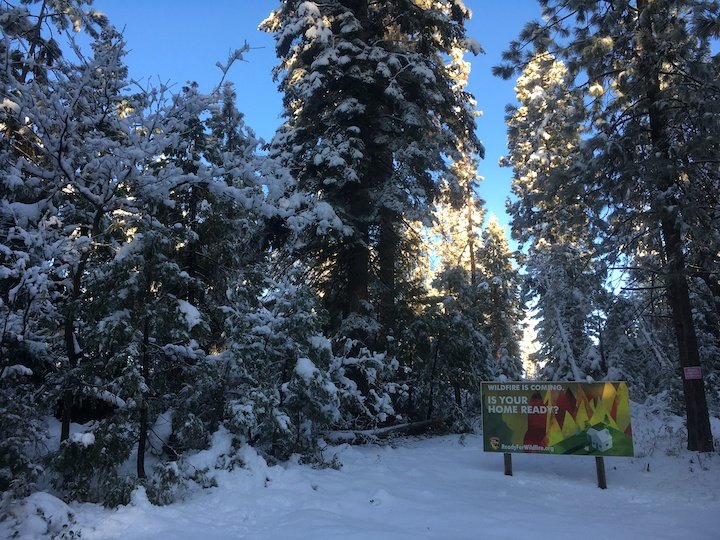Forester’s Notes: A post-wildfire season reflection


When I was asked to put together an end-of-fire-season blog for this newsletter, I had to stop and ask, “Is fire season actually over?” Indeed, by traditional standards, fire season lasts from June to early November.
Written by: Peter Wyrsch
When I was asked to put together an end-of-fire-season blog for this newsletter, I had to stop and ask, “Is fire season actually over?” Indeed, by traditional standards, fire season lasts from June to early November. And, with all of the atmospheric rivers andonce-in-a-generation snowfall events currently blowing through California and the Pacific Northwest, it’s easy to nod and affirm that the 2021 fire season is indeed drawing to a close.
But the nod misses a broader context. In the Rockies, two men were killed this year in conflagrations that began in mid-November. California’s Camp Fire, the deadliest in the state’s history, began in early November of 2018 and burned through that month.
Unless something really changes, we have fortunately likely seen the last megafires of this year. And indeed, we saw quite a few in 2021. Our partners on the Klamath National Forest in California experienced the Antelope Fire, and witnessed a massive fire tornado driven by the extreme heat of the fire itself. The Caldor Fire impacted more than 221,000 acres in the Lake Tahoe area,forcing the closure of Sierra at Tahoe for at least part of this coming ski season. A little further north, Oregon’s Bootleg Fire burned 413,717 acres in the Fremont-Winema National Forest. This fire particularly caught our attention; although the Bootleg Fire generated massive pyrocumulonimus clouds as a result of the heat being released in the blaze, forest management techniques long used by the indigenous peoples of Southern Oregon appear to have significantly reduced the negative impacts of the fire in certain areas.
By far the biggest fire this year, however, was the Dixie Fire. By the time it was 100% contained, 963,309 acres in the Feather River Watershed were burned. It stands as the second largest recorded wildfire in California history. While the heroic efforts of firefighters saved the logging town of Chester on the shores of Lake Almanor, the goldrush town of Greenville was severely impacted and lost most of its historic downtown. Moreover, the Dixie Fire ignited just miles away from the town of Paradise, California–the epicenter of the 2018 Camp Fire. You can listen to my colleagues, Dr. Tessa Maurer, Andrew Salmon, and myself talk some about the impacts of the Dixie Fire in the video below.
After an especially long and trying fire season, it can be tempting to take a pessimistic view… But this wouldn’t be a Blue Forest newsletter if we didn’t leave you with a bit of hope! Here are a couple of things we’re excited about in the fire world as we head into winter:
-
Prescribed burning in winter! As the U.S. Forest Service works to clear its backlog of prescribed fire projects, some foresters and land managers are innovating to burn during the winter months when risk is lower. Here’s Dr. Rob York explaining how to conduct a winter burn. (Please, don’t try this at home!)
-
California Governor Gavin Newsom signed AB2147, which clears the way for formerly incarcerated firefighters to get jobs with CalFire and the U.S. Forest Service after their release. Programs like the Forestry and Fire Recruitment Program provide a pathway to these men and women to support their efforts toward becoming wildland firefighters.